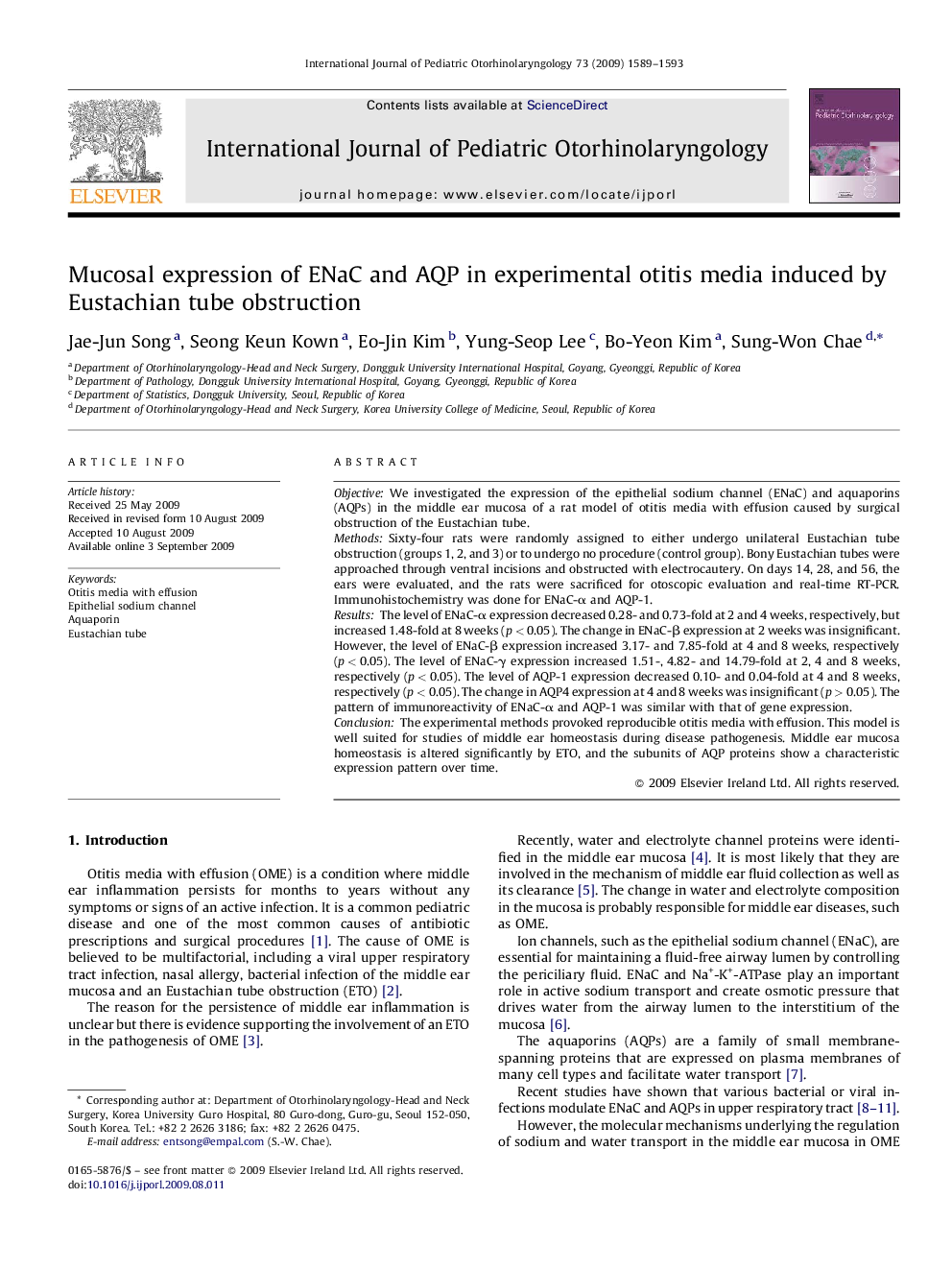| Article ID | Journal | Published Year | Pages | File Type |
|---|---|---|---|---|
| 4115000 | International Journal of Pediatric Otorhinolaryngology | 2009 | 5 Pages |
ObjectiveWe investigated the expression of the epithelial sodium channel (ENaC) and aquaporins (AQPs) in the middle ear mucosa of a rat model of otitis media with effusion caused by surgical obstruction of the Eustachian tube.MethodsSixty-four rats were randomly assigned to either undergo unilateral Eustachian tube obstruction (groups 1, 2, and 3) or to undergo no procedure (control group). Bony Eustachian tubes were approached through ventral incisions and obstructed with electrocautery. On days 14, 28, and 56, the ears were evaluated, and the rats were sacrificed for otoscopic evaluation and real-time RT-PCR. Immunohistochemistry was done for ENaC-α and AQP-1.ResultsThe level of ENaC-α expression decreased 0.28- and 0.73-fold at 2 and 4 weeks, respectively, but increased 1.48-fold at 8 weeks (p < 0.05). The change in ENaC-β expression at 2 weeks was insignificant. However, the level of ENaC-β expression increased 3.17- and 7.85-fold at 4 and 8 weeks, respectively (p < 0.05). The level of ENaC-γ expression increased 1.51-, 4.82- and 14.79-fold at 2, 4 and 8 weeks, respectively (p < 0.05). The level of AQP-1 expression decreased 0.10- and 0.04-fold at 4 and 8 weeks, respectively (p < 0.05). The change in AQP4 expression at 4 and 8 weeks was insignificant (p > 0.05). The pattern of immunoreactivity of ENaC-α and AQP-1 was similar with that of gene expression.ConclusionThe experimental methods provoked reproducible otitis media with effusion. This model is well suited for studies of middle ear homeostasis during disease pathogenesis. Middle ear mucosa homeostasis is altered significantly by ETO, and the subunits of AQP proteins show a characteristic expression pattern over time.
